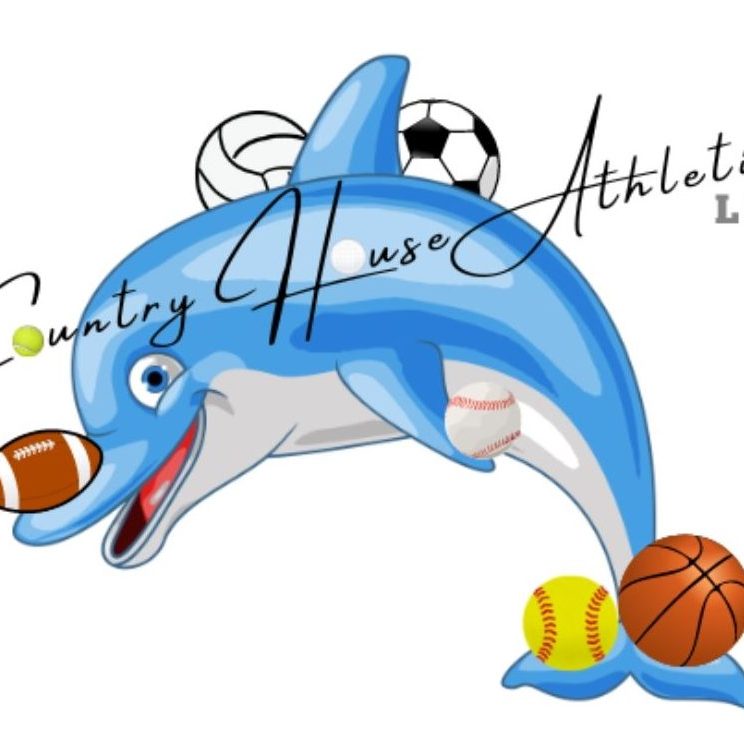Concussions are one of the most talked-about injuries in youth sports and yet they are also one of the most misunderstood. There is scare marketing all over the place when it comes to concussion. It’s important for us here at Country House Athletics to lead you down a path absent of the misconceptions and misinformation so that you have all the information you need toward appropriate concussion prevention, recognition and management. As a parent, it’s important to know exactly what a concussion is, what it isn’t, and what steps to take if you suspect your child has one.
What Is a Concussion?
A concussion is defined as a mild traumatic brain injury (TBI) that occurs when a blow to the head or body causes the brain to move rapidly within the skull. The brain is floating in fluid within the skull. This external force causes the brain to smash against the inside of the skull. A concussion is considered a functional injury because rather than being a structural injury like a bruise or fracture, a concussion affects how the brain functions. It temporarily disrupts normal brain activity, leading to symptoms like confusion, dizziness, and headaches. It’s why, when you go get your child’s head checked in the hospital setting following injury, nothing typically shows up on imaging. More on that later…
Concussions can happen in any sport or activity where there is a risk of contact, including football, soccer, basketball, wrestling, and even cheerleading. Remember, a concussion does not require a direct hit to the head—it can also result from a sudden jolt or whiplash-like motion.
What a Concussion Is NOT
There are several misconceptions about concussions. Here’s what a concussion is not:
- A bruise on the brain – Unlike a contusion, a concussion does not involve bleeding or swelling in the brain.
- Only diagnosed if the athlete is knocked out – Loss of consciousness happens in less than 10% of concussions.
- Always obvious right away – Symptoms can appear immediately or develop hours, even days, later.
- A minor injury that athletes should ‘shake off’ – Concussions are brain injuries, and ignoring them can lead to serious complications, including second-impact syndrome and long-term cognitive issues.
Signs and Symptoms of a Concussion
What should you watch for if your child takes a hit or fall. Common sign and symptoms include:
- Headache or pressure in the head
- Dizziness or balance issues
- Nausea or vomiting
- Blurred vision or sensitivity to light/noise
- Confusion or memory problems
- Difficulty concentrating
- Mood changes (irritability, sadness, anxiety)
- Sleep disturbances (sleeping more or less than usual)
What to Do if You Suspect a Concussion
- Remove Your Child From Play Immediately – If a concussion is suspected, they should not return to play the same day and refrain from activities with high risk of head injury.
- Seek Medical Evaluation – A healthcare professional trained in concussion management should assess your athlete.
- Follow a Step-by-Step Recovery Plan – Rest is crucial in the first 24-48 hours, followed by a gradual return to activity under medical guidance. We’ll touch on this more later as well…
- Monitor for Worsening Symptoms – Seek emergency care if your child experiences persistent vomiting, worsening headaches, slurred speech, balance disturbances or loss of consciousness.
How Coaches Are Trained to Handle Concussions
In Pennsylvania, youth sports coaches are required by the Safety in Youth Sports Act to complete concussion management training before each season. This ensures they are equipped to recognize potential concussions and take appropriate action. The two primary approved training courses are:
- CDC HEADS UP to Youth Sports – An online course that educates coaches on recognizing and responding to concussions.
- NFHS Concussion in Sports – A course that provides a comprehensive understanding of concussion safety and management.
These trainings help ensure that coaches can identify symptoms, remove players from play when necessary, and follow return-to-play protocols. Additionally, coaches who fail to follow concussion management protocols face penalties, including suspension from coaching. Make sure your school or sports organization is in compliance – your child deserves it!
The Bottom Line
Concussions are serious but manageable injuries when recognized and treated properly. Parents play a critical role in ensuring young athletes recover fully before returning to play, while trained coaches add an extra layer of protection. When in doubt, always err on the side of caution—because when it comes to brain health, safety comes first.
If we here at Country House Athletics can help with any of your concussion prevention and management questions or concerns, don’t hesitate to reach out!

No responses yet